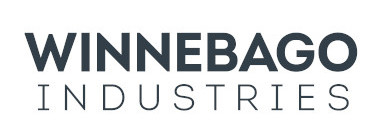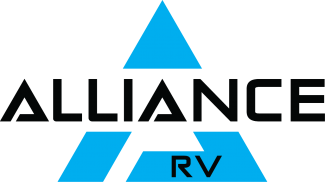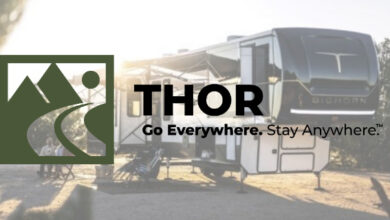Winnebago Industries Revenues Reflect a Cooling Market

Winnebago Industries on Friday reported fiscal first quarter revenues of $952.2 million, a decrease of 17.6% compared to $1.2 billion for Q1 of fiscal 2002.
The drop, caused by fewer units sold, was partially offset by growth in the company’s marine segment and price increases across the board for higher material and component cost.
Net income for the quarter was $60.2 million, a drop of 39.6% compared to a year ago.
“Winnebago Industries’ first quarter results are a testament to the strength, diversification and resiliency of our brand portfolio amid a dynamic macroeconomic environment,” said President and CEO Michael Happe. “Growth in our motorhome and marine segments helped to mitigate challenging market conditions in our towables business, demonstrating the ongoing benefits of a more balanced array of outdoor recreation businesses. We are also proud of the investments our team continues to make in strengthening our golden threads of quality, innovation and experience. … All three of our RV brands – Winnebago, Grand Design, and Newmar – (received) the 2022 Dealer Satisfaction Index awards from the RV Dealer Association.
“I want to thank all of our Winnebago Industries employees for their hard work during the quarter and their perseverance as we continue to face various challenges, including ongoing supply chain disruption at times. While we expect uncertain market conditions to continue to persist into calendar year 2023, we will remain disciplined on our business operations while still making smart investments in profitable differentiation for our future.”
Revenues for the towable segment were $347.3 million for the first quarter, down 46.7% compared to record results in the prior year, primarily driven by a decline in unit volume. Backlog in towables decreased to $434.0 million, a decrease of 76.9% compared to the prior year period driven by higher dealer inventory levels.
Revenues for Winnebago’s motorhome segment were $464.2 million for the first quarter, up 10.1% from the prior year, driven by price increases related to higher material and component costs, partially offset by unit volume decline. As previously disclosed, Mercedes-Benz AG has issued a global recall related to an electronic parking brake defect affecting model years 2019 through 2022 Sprinter chassis. Winnebago Industries, its dealers, and other upfitters using the Sprinter chassis are not able to sell any of these affected products pending the implementation of a fix. For the first quarter of Fiscal 2023, we estimate the recall had a negative impact of approximately $50 million in net sales, as well as corresponding impacts to profitability and cash flow.
Backlog of motorhomes decreased to $1.6 billion, down 33.8% from the prior year, driven by normalizing levels of dealer inventories.
Revenues for the company’s marine segment, the company’s fastest-growing segment, were $131.4 million for the first quarter, up 65.7% from unit volume growth and price increases related to higher material and component costs. Backlog for the Marine segment was up 23.8% compared to the prior year period from continued re-stocking of dealer inventories and signing of new dealers.
Happe continued, “At our recent Investor Day, Winnebago Industries shared strategic priorities and business targets through our fiscal 2025 year. This was a well-considered, positive representation of our plans and ambitions in the future to create an even stronger company and drive success for our many stakeholders. Winnebago Industries is committed to being the trusted leader in outdoor lifestyle solutions and to that end we will continue to invest strategically in long-term initiatives that create a profitable growth foundation. However, navigating the near-term during the rest of Fiscal 2023 is critically important in maintaining momentum and financial health. We expect some supply chain issues and the normalization of outdoor retail demand to continue through the rest of this period, yet we are focused on maintaining solid profitability by leveraging our highly variable cost structure, strong relationships with dealers and suppliers, and the appeal of our increasingly diverse portfolio of premium brands.”


